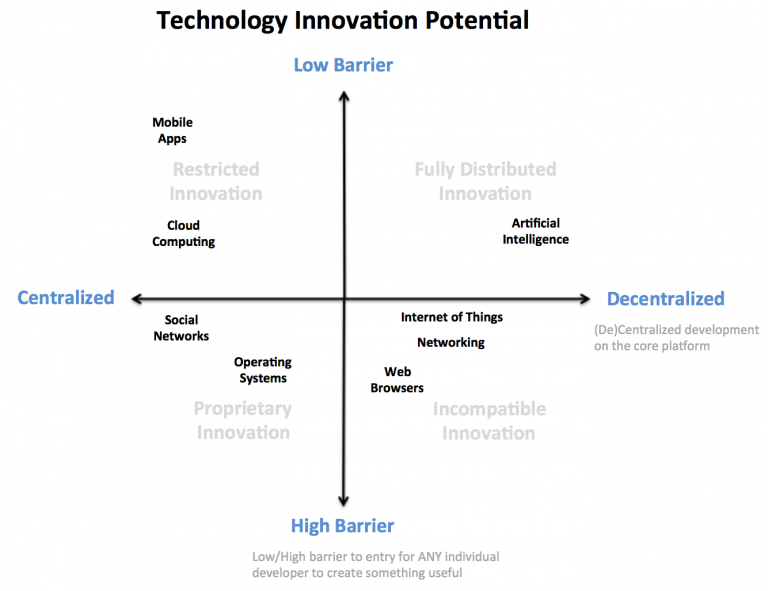When you are trying to solve an existing problem differently you may call it innovation. Yes a bloated term but still sexy when it comes to announcing new technology products. When you want your company to bring something new on the table you should have some kind of a strategy. Scenario thinking helps. When you are doing FOSS developments or are creating cc-by publications you should be afraid of someone taking all your hard work and get the economic advantage and leaving you with a nice learning curve which you can not eat.
We all know that open innovation based on FOSS principles is more attractive than close developments. If you do not agree, mail me or discover yourself! I believe that openness can and should be an enabler without fear. So choose your FOSS licence right! Besides licencing there are other barriers if you like open innovation and FOSS. I read a blog with the nice picture below on this subject.

This model helps you in thinking about technology innovations and plot this on FOSS innovation:
- Low Barrier + Centralized Dev = Restricted Innovation :Not a real attractive FOSS project to join. You can fork it, but compiling the software is already a hell.
- High Barrier + Centralized Dev = Proprietary Innovation :No real open development. Mostly OSS in name only aka OINO. The OSS part of the software is lacking crucial libraries (these are not FOSS), or development is not done in the open on a public accessible software repository.
- High Barrier + Decentralized Dev = Incompatible Innovation :It will take a lot of time and effort to fork such a project and get it working with your own extensions. So you must be insane to make such a project and release it on your own.
- Low Barrier + Decentralized Dev = Fully Distributed Innovation: Happy forking! Real open and nothing to hide. Everyone can benefit and extend the software. And yes you should use the GPL license to make sure everyone wins.
The power of such a picture is that with two simple axes you are forced to think differently about your FOSS work. So visuals matter and guide focus your thinking. Choose other axis and start thinking again until you really see that your new product is not complex to use, create, extend or to sell!
